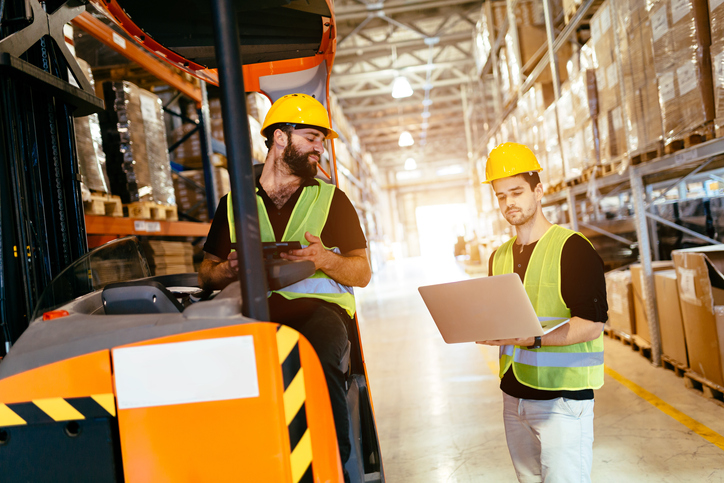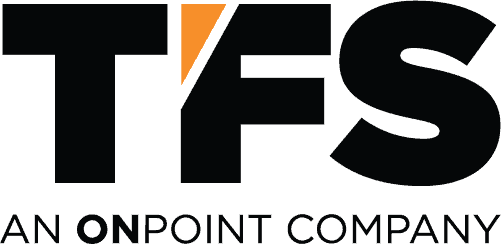 Times are tumultuous right now, so it might feel like your company may have to choose between increasing profit and boosting sustainability—but the good news is that the two aren’t mutually exclusive. In fact, when it comes to material handling, just asking the right questions can unlock leaner, cleaner, greener, and more profitable decisions.
Times are tumultuous right now, so it might feel like your company may have to choose between increasing profit and boosting sustainability—but the good news is that the two aren’t mutually exclusive. In fact, when it comes to material handling, just asking the right questions can unlock leaner, cleaner, greener, and more profitable decisions.
“Within every material handling operation or equipment project are opportunities to deliver sustainability benefits for your people, your company, and—of course—the planet,” says Tom Ryder, Chief Commercial Officer, TFS. “If you aren’t answering ‘yes’ to some key questions, then you may be missing out on the ability to save money, enhance worker safety, and become a more sustainable company.”
So, what questions should you be asking? Here are some that we at TFS have found particularly useful when building strategies and roadmaps for our clients:
1. Are you reducing the number of equipment assets you have?
Are your purchasing, leasing, and process strategies designed to reduce the number of assets you need on the warehouse floor while maintaining the same level of productivity? If you can find that balance, you’ll enhance employee safety, increase operational efficiency, and reduce your fleet’s energy usage and carbon emissions.
“Fleet rightsizing or downsizing has a direct impact on making the warehouse floor safer, greener, and less energy-hungry. Not to mention, when you reduce your equipment needs, you reduce the amount of maintenance required on your fleet,” said Ryan Lynch, Senior Vice President, Marketing with OnPoint Group.
2. Can you reduce your number of battery assets?
In a similar vein, by reducing the number of required batteries for your fleet—whether through proactive maintenance programs, using smaller and more energy-efficient equipment, or data-driven power optimization strategies—you’ll save money and reduce emissions associated with manufacturing and transporting batteries.
Many companies keep dozens upon dozens of “spare” batteries handy for issues, but this is a costly strategy that takes up valuable warehouse space for storage. It’s much more cost-effective to use well-maintained and monitored batteries, allowing telematics to alert you to potential issues before they become insurmountable.
3. Are you transitioning to an electric fleet?
The eco-friendly perks of electrification are well known—reduced emissions, safer battery handling, lower energy costs, and more. A bonus for fleet managers is that the move towards electric equipment has the additional benefit of lowering the cost of ownership over the machine’s lifespan.
4. Were you able to improve a process while you changed equipment?
When bringing in a new forklift, did you take the opportunity to install technology or implement a new way of doing things that saved time and energy? New equipment is an opportunity to examine your current processes. As Ryder said, “A new piece of equipment can provide a good opportunity to explore things like GPS systems that allow us to improve material flow throughout a facility. That results in fewer moves per hour, lowering energy requirements and reducing emissions.”
5. Did your equipment project make something safer?
Worker safety is fundamental to sustainable operations and is receiving increased attention from both consumers and investors. That’s why it pays to consider how your new piece of equipment will reduce the risks associated with material handling, either by providing more room to work, reducing touch points, adding situational awareness (e.g., GPS), or providing greater overall efficiencies.
6. Are you taking advantage of automation?
Automation, especially combined with other innovations like advanced racking design, can free up warehouse space, reduce touch points, and enhance material handling processes. This saves time, makes the floor safer for employees, and reduces fleet demands.
7. Are you promoting a circular economy?
A circular economy is one in which materials and equipment are repaired, recycled, or otherwise repurposed so they never end up in a landfill. It’s possible to ensure the same happens for batteries and forklifts, but it requires some foresight and planning. Part of that, at least for forklifts and other assets, involves reallocating them into other roles and/or facilities before ultimately recycling or re-selling them.
“When a TFS fleet management specialist goes into a location, they’re always looking at ways to reduce the number of assets and find a home or new life for aging assets,” says Lynch. “Getting forklifts into that circular economy isn’t hard to do, and it keeps these machines from being tossed away.”
The path to sustainability isn’t as simple as buying a better lightbulb. In material handling, it is a process that requires decision-makers to ask honest questions about current operations and future purchasing projects. This can seem like a lot of extra work, but not everything needs to be done at once. And more importantly, there are fleet management specialists who can do the heavy lifting.
“There are a lot of levers you can pull to become a more sustainable operation, whether that’s changing something that’s already happening or when you’re going to make an equipment purchase,” says Ryder. “No matter when our clients want to start, we can be there to help find and implement those opportunities in a way that makes sense and will, ultimately, have a positive impact on the planet, people, and company.

